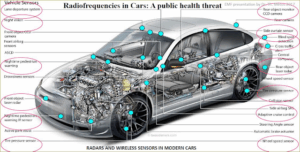We rarely hear about brain tumors, despite how serious they can be. Major awareness campaigns focus on other common cancers, but news on brain tumors rarely make headlines, even though the rates of both malignant and benign brain tumors are quietly rising in the U.S.
The data is readily available. But for some reason, this growing health concern isn’t getting the attention it deserves from the media or most doctors. Understanding the rising rates of brain tumors could be the key to better prevention, earlier diagnosis, and potentially more effective treatments.
How Common Are Brain Tumors?
According to the Central Brain Tumor Registry of the United States, approximately one in 161 Americans will be diagnosed with a brain tumor, or some other central nervous system (CNS) tumor in their lifetime. The overall rate of these tumors is 23.03 cases per 100,000 people. With the current U.S. population, that’s roughly about 392,000 cases. Women have a higher rate of 25.31 per 100,000, versus men at 20.59 per 100,000 people.
Childhood and Adolescent Cases
Data shows that brain tumors aren’t just affecting adults. The rate of childhood brain tumors in children ages 0-14 sits at 5.65 cases per 100,000. Among adolescents and young adults between the ages of 15 and 39, the rate is higher at 11.2 cases per 100,000 people. Thankfully, the majority of these cases are benign.
Mortality Rates
The scary part about all of this is that brain tumors can be deadly. Between 2011 and 2015, brain tumors were the reported cause of over 77,000 deaths in the U.S. This is not an insignificant number, so why aren’t more people talking about it?
Brain Tumor Rates Are Increasing: A Look at the Numbers
Here’s why there is a cause for concern: brain tumor rates aren’t just high – they’re increasing. Between 2000 and 2010, the annual percentage increase for malignant brain and CNS tumors in children was 0.6%, and in adolescents it was 1.0%. That might not sound like much for one year, but over a decade? It adds up.
Studies have found that non-malignant tumors have been on the rise even faster. Among adolescents, these non-malignant brain and CNS tumors increased at a yearly rate of 3.9% between 2004-2010. In adults, we saw a rise from 15.9 cases per 100,000 in 2004 to 19.7 cases per 100,000 in 2012, just 8 years later.

A Potential Link to EMFs
This has become a controversial topic for many, but a growing body of research suggests that the electromagnetic field (EMF) radiation from our wireless devices could have something to do with this rising rate in brain tumors.
- Several case studies have linked cell phone use to an increased risk of meningioma, a typically-benign tumor that grows from the membranes that surround the brain and spinal cord.
- A study of 790,000 women in the United Kingdom found that the risk of pituitary tumors was more than double among women who used a cell phone for five years or less compared to women who had never used a cell phone. With today’s technology, however, it’s rare to find anyone who has never used a cell phone.
- Three independent case studies from the International Journal of Epidemiology, the International Journal of Oncology, and the Université de Bordeaux found that long-term use of cell phones increased risk for glioma, a potentially malignant brain tumor.
One case study found the risk of glioma to double after 10 years of cell phone use, then triple after 25 years.
The CEFALO Study
This multinational case-control study found a 36% increase in brain tumor risk among children and adolescents between the ages of 7-19 who used cell phones at least once a week for six months. It’s interesting to note, however, that this study took place between 2004 and 2008. This was before smartphones became widely popular and frequently used by young people.
Additionally, in a sample of 556 youth, there was a significant association between the time they began using a cell phone and their brain tumor risk. “Children who had used cellphones for 2.8 more years were twice as likely to have a brain tumor than those who never regularly used cellphones.”
What This Means for Public Health: Brain Tumors & EMF
Brain tumors can be difficult to treat, and the survival rates for malignant brain tumors remain low. Early detection is crucial, but if this issue isn’t on our radar, early diagnosis is not as likely. And unfortunately, the current safety guidelines surrounding EMF limits from wireless devices are outdated. The Federal Communications Commission (FCC) last updated their guidelines for EMF radiation emissions in 1996, long before cell phones became such an integral part of our lives.
With the recent election, the new administration is making sweeping declarations to make improvements and further regulate environmental health risks, including electromagnetic radiation. See the release from the White House and learn more about the MAHA commission led by Robert F. Kennedy Jr., who has litigated against telecommunications companies and the FCC about EMF and brain tumors – and won!
Why Isn’t This Increase in Cases Common Knowledge?
Because cancer registries mainly track malignant cases, non-malignant brain tumors – which make up a large portion of brain tumor cases – are often underreported. The CBTRUS itself has reported that its data is incomplete, because collecting data for non-malignant tumors was only mandated starting in 2004. Historical data from the years prior to widespread wireless device usage is lacking.
Doctors often rely on national cancer statistics when they’re assessing their patients’ health risks. But what if those statistics don’t accurately represent brain tumor trends? Doctors might not know to sound the alarm and inform patients of early warning signs.
How to Protect Yourself: Consider EMF Protection
We don’t have to wait for public health agencies to catch up. There are plenty of simple steps we can take today to reduce potential risks from wireless radiation exposure.
Limit Wireless Exposure
To cut down on EMFs from your wireless devices, remember: exposure increases with proximity. Avoid direct contact with your body by using speakerphone or wired headphones instead of holding your phone to your head. Keep the phone out of your pocket, and think about using airplane mode when you don’t need to be reachable.
Create an EMF-Friendly Environment
This is especially effective in your bedroom, or any place in the house where you spend a great deal of your time. Cut down on EMF exposure by turning off your Wi-Fi router at night, keeping electronics out of your bedroom, and using a wired internet connection instead of Wi-Fi where possible.
Consider EMF Protection
There’s a proven, patented solution out there that helps mitigate potential risks from EMF exposure. I’m talking about Aires, whose Lifetune devices are designed to reshape electromagnetic field radiation into a form that’s more biologically compatible with our bodies.
Stay Informed
Talk to your doctor about brain health and any possible environmental risks that could potentially impact your brain. Be your own advocate for better health policies by sharing what you know with your community, and encourage your friends and family to take steps to reduce their EMF exposure.
Subscribe to our newsletter to keep up to date on the latest EMF research, developments in how to protect yourself and keep your family safe from this invisible threat.
EMF Awareness Is the First Step Forward
The measurable rise in brain tumor rates is an issue that deserves more attention. Science is still evolving, but the data we do have is enough to get the conversation started.
Remember – it’s about awareness, not fear. There’s no need to panic, but it is important to stay informed. Make those small changes in your daily habits to reduce EMF exposure, look into EMF protection, and have the conversations needed to stay proactive about your help. Maybe it’s time to start asking our doctors the hard questions about how EMFs are impacting our health, because it’s a conversation worth having.








